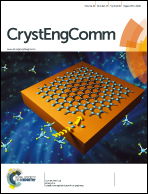Nanocrystallization in magnetron sputtered Zr–Cu–Al–Ag thin film metallic glasses
Abstract
Zr-based thin film metallic glasses (TFMG) were fabricated from a polycrystalline Zr48Cu36Al8Ag8 (at.%) target by DC magnetron sputtering. A series of characterization techniques were employed to study the structure, composition and thermal stability of the glassy coating and also the mechanical compliance of the TFMG over stainless steel. X-ray diffraction indicated a completely amorphous microstructure. However, specimens prepared for plan-view TEM revealed nanocrystallites of the CuZr2 phase dispersed in an amorphous matrix. Annealing experiments showed that the primary phase to nucleate in the films is the CuZr2 phase as observed from XRD data. The film/substrate interface did not show any inter-diffusion, as confirmed by high resolution scanning TEM. Calorimetric studies by DSC showed a large supercooled liquid region of about 83 K. Surface morphological studies by both FE-SEM and AFM indicated a very smooth surface devoid of pores or cracks, with an average roughness of about 1.25 nm. X-ray photoelectron spectroscopy (XPS) showed oxygen on the film surface; both Zr and Al revealed non-metallic bonding peaks concomitant with a mixed or bilayer oxide on the surface. A very high scratch resistance was observed for the specimen coated over stainless steel substrates.


 Please wait while we load your content...
Please wait while we load your content...